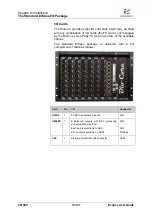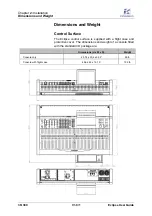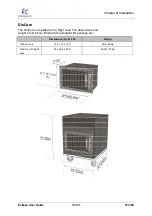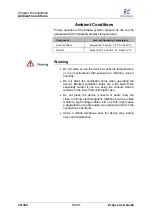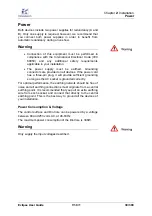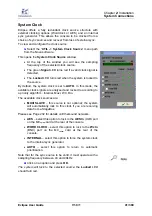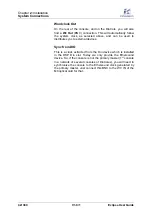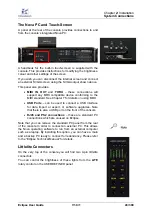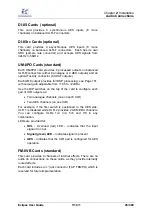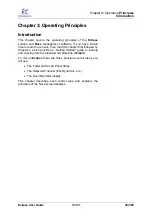
Chapter
2:
Installation
Audio Connections
Eclipse User Guide
V1.0/1
45/ 380
DI-8S Cards (optional)
This card provides 4 synchronous AES inputs (8 mono
channels) on balanced XLR-F connectors.
DI-8Src Cards (optional)
This card provides 4 asynchronous AES inputs (8 mono
channels) on balanced XLR-F connectors. Each has its own
SRC (sample rate converter) and accepts AES signals from
32kHz to 56kHz.
UM-8PO Cards (standard)
Each UM-8PO card provides 8 processed outputs on balanced
XLR-M connectors (either 8 analogue or 4 AES outputs) and an
optical TosLink connector (8 ADAT outputs).
Each UM8 output provides full DSP processing, see Page 151,
with output gain adjustable from +10.5 to +22dBu.
Use the DIP switches on the top of the card to configure each
pair of XLR outputs as:
•
Two analogue channels (one on each XLR)
•
Two AES channels (on one XLR).
For example, if the first switch is positioned to the AES side,
XLR 1 is disabled while XLR 2 provides 2 AES/EBU channels.
You can configure XLRs 1/2, 3/4, 5/6 and 7/8 in any
combination.
LEDs are provided for:
•
OVL
- Overload (red) LED – indicates that the input
signal it too hot.
•
Signal (green) LED
– indicates signal is present.
•
AES
– indicates that the XLR pair is configured for AES
operation.
FM-8VB Cards (standard)
This card provides 8 channels of internal effects. There are no
audio i/o connections on these cards, as they provide internally
routed effects.
Each card includes a ¼” jack connector (TAP TEMPO) which is
reserved for future implementation.




